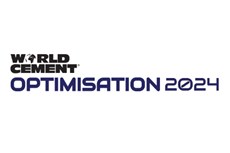Committing to carbon capture
Published by David Bizley,
Editor
World Cement,
Aniruddha Sharma, Carbon Clean, explains how carbon capture has become a feasible option for cement companies committed to climate action.
The cement sector is under no illusions about the urgent need to address its carbon emissions. The industry accounts for between 4 – 8% of global man-made carbon emissions and, according to the Paris agreement, carbon emissions from cement production need to fall by at least 16% by 2030 in order to achieve the 1.5°C target.
But this is a challenge. Cement is the second most consumed product in the world after water and the largest emitter of CO2 in the built environment. Given that the world is expected to build the equivalent of another New York City every month for the next 40 years, action is required now to ensure that emissions do not actually go up rather than down.
Action is underway and incentives to accelerate this action are increasing. At COP26, for example, a new Industrial Deep Decarbonisation Initiative (IDDI) was launched that seeks to create new markets for low carbon concrete and steel to help decarbonise heavy industry.
It began with the governments of the UK, India, Germany, the United Arab Emirates and Canada pledging to buy low-carbon concrete and steel. The IDDI will disclose the embodied carbon of major public construction projects by 2025, achieve net zero in major public construction steel and concrete by 2050, and set an emissions reduction target for 2030.
However, many low carbon initiatives are at an incredibly early stage of development and a long way from widespread commercial adoption. Carbon capture technologies are ready now, can capture over 90% of a plant’s CO2 emissions and are more cost-effective and feasible to install than ever before.
Carbon capture – A solution for today
Carbon capture, utilisation and storage (CCUS) is, of course, not new. Post-combustion CCS using amine-based absorption has been in use for many years and is a proven technology.
This kind of carbon capture is a great solution for the cement sector. Cement factories are built to operate for an average of 40 years or more and require large investments. Simply replacing them is usually not an option, so retrofit options, like carbon capture, are needed.
Carbon capture can be adapted to suit a cement plant’s current operations, with no real change in the operating process required. A cement plant’s flue gas is also ideal for carbon capture given the high concentration of CO2, making it easier to extract and resulting in high purity CO2 that is ready for conditioning, export and utilisation or storage.
However, there have also been some concerns around the implementation of CCUS. Firstly, the costs have been high (historically between US$80 – 120/t) and secondly, it has been extremely challenging to secure the required onsite space to accommodate a conventional carbon capture plant.
A recent survey published by Decarb Connect found that onsite space remains a major concern and that industries need to be able to integrate carbon capture solutions within their existing footprint.
Both the cost and space barriers to deployment are being addressed with Carbon Clean’s next generation technology – CycloneCC. Launched late last year, CycloneCC is the world’s smallest industrial carbon capture solution that is modular, pre-fabricated and skid-mounted to ease installation issues. It is up to five times smaller than conventional carbon capture units and can be installed in less than eight weeks. Crucially, the solution is expected to reduce the overall cost of carbon capture by up to 50%, to reach US$30/t on average.
Want to read more? To access the full version of this article, and many others, sign up for a free trial of World Cement here: https://www.worldcement.com/magazine/world-cement/trial/
Read the article online at: https://www.worldcement.com/special-reports/25032022/committing-to-carbon-capture/
You might also like
Rohrdorfer starts ethylene production from carbon dioxide
Following a test phase, production is to be scaled up to an industrial scale, thereby establishing a seamless CO2 circular economy.


